
Dacoity is a term used for "banditry" in the Indian subcontinent. The spelling is the anglicised version of the Hindi word डाकू (daaku); "dacoit" is a colloquial Indian English word with this meaning and it appears in the Glossary of Colloquial Anglo-Indian Words and Phrases (1903). Banditry is criminal activity involving robbery by groups of armed bandits. The East India Company established the Thuggee and Dacoity Department in 1830, and the Thuggee and Dacoity Suppression Acts, 1836–1848 were enacted in British India under East India Company rule. Areas with ravines or forests, such as Chambal and Chilapata Forests, were once known for dacoits.
An outlaw, in its original and legal meaning, is a person declared as outside the protection of the law. In pre-modern societies, all legal protection was withdrawn from the criminal, so anyone was legally empowered to persecute or kill them. Outlawry was thus one of the harshest penalties in the legal system. In early Germanic law, the death penalty is conspicuously absent, and outlawing is the most extreme punishment, presumably amounting to a death sentence in practice. The concept is known from Roman law, as the status of homo sacer, and persisted throughout the Middle Ages.

Salvatore Giuliano was an Italian bandit, who rose to prominence in the disorder that followed the Allied invasion of Sicily in 1943. In September of that year, Giuliano became an outlaw after shooting and killing a police officer who tried to arrest him for black market food smuggling, at a time when 70 percent of Sicily's food supply was provided by the black market. He maintained a band of subordinates for most of his career. He was a flamboyant, high-profile criminal, attacking the police at least as often as they sought him. In addition, he was a local power-broker in Sicilian politics between 1945 and 1948, including his role as a nominal colonel for the Movement for the Independence of Sicily. He and his band were held legally responsible for the Portella della Ginestra massacre, though there is some doubt about their role in the numerous deaths which occurred.

A highwayman was a robber who stole from travellers. This type of thief usually travelled and robbed by horse as compared to a footpad who travelled and robbed on foot; mounted highwaymen were widely considered to be socially superior to footpads. Such criminals operated until the mid- or late 19th century. Highwaywomen, such as Katherine Ferrers, were said to also exist, often dressing as men, especially in fiction.

A hajduk is a type of irregular infantry found in Central, Eastern, and parts of Southeast Europe from the late 16th to mid 19th centuries. They have reputations ranging from bandits to freedom fighters depending on time, place, and their enemies.
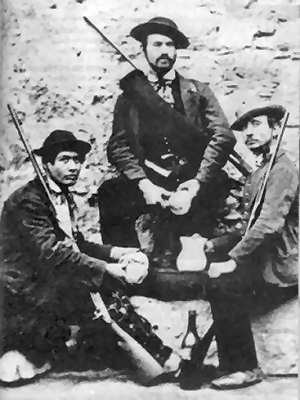
Banditry is a type of organized crime committed by outlaws typically involving the threat or use of violence. A person who engages in banditry is known as a bandit and primarily commits crimes such as extortion, robbery, and murder, either as an individual or in groups. Banditry is a vague concept of criminality and in modern usage can be synonymous for gangsterism, brigandage, marauding, terrorism, piracy and thievery.
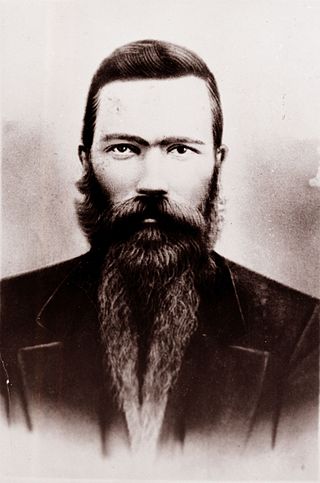
Henry Berry Lowry was an American outlaw. A Lumbee Native American, he led the Lowry Gang in North Carolina during and after the American Civil War. Many local North Carolinians remember him as a Robin Hood figure. Lowry was described by George Alfred Townsend, a correspondent for the New York Herald in the late 19th century, as "[o]ne of those remarkable executive spirits that arises now and then in a raw community without advantages other than those given by nature."
Rai Abdullah Khan Bhatti popularly known through his Punjabi moniker, Dulla or Dullah Bhatti, is a Punjabi folk hero who came from the Pakistani Punjab region and led the Punjabis to a revolt against Mughal rule during the reign of the Mughal emperor Akbar. He is entirely absent from the recorded history of the time, and the only evidence of his existence comes from Punjabi folk songs.
Shifta originally was a word that had a heroic or anti-heroic connotation rather than a villainous character, over time, the term has taken on a more villainous meaning. It is a term mostly used in Ethiopia, Eritrea, Kenya, Tanzania, and Somalia. The Swahili word was loaned from the Somali shufta during the Shifta War, and is in turn derived from Amharic ሽፍታ (šəfta). Historically, the shifta served as a local militia in particularly remote, rural and often lawless parts of the Horn of Africa, namely the Ethiopian Highlands. The word shifta can be translated as "bandit" or "outlaw", but can include anyone who rebels against an authority or an institution that is seen as illegitimate, like the Arbegnoch guerillas during the Italian occupation of Ethiopia.

Brigandage is the life and practice of highway robbery and plunder. It is practiced by a brigand, a person who usually lives in a gang and lives by pillage and robbery.
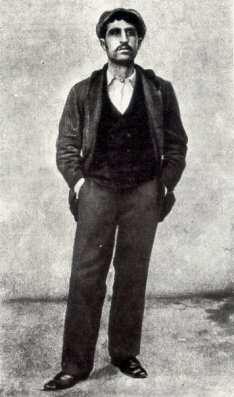
Giuseppe Musolino, also known as the "Brigante Musolino" or the "King of Aspromonte," was an Italian brigand and folk hero. Musolino received great notoriety and admiration in Calabria for escaping prison and committing a string of murders in retaliation for false testimony delivered against him while on trial; his later, second, trial after his recapture was subject to extensive international media coverage and attention.
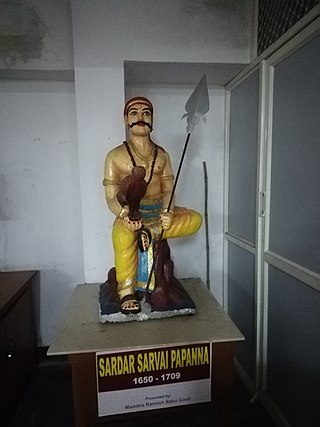
Papadu was a freedom fighter of early-18th century India who rose from humble beginnings to become a folklore hero. His deeds have been described by historians Barbara and Thomas Metcalf as "Robin Hood-like", while another historian, Richard Eaton, considers him to be a good example of a social bandit.

The Thái Nguyên uprising in 1917 has been described as the "largest and most destructive" anti-French rebellion in Vietnam between the Pacification of Tonkin in the 1880s and the Nghe-Tinh Revolt of 1930–31. On 30 August 1917, an eclectic band of political prisoners, common criminals and insubordinate prison guards mutinied at the Thái Nguyên Penitentiary, the largest one in the region. The rebels came from over thirty provinces and according to estimates, involved at some point roughly 300 civilians, 200 ex-prisoners and 130 prison guards.

Brigandage in Southern Italy had existed in some form since ancient times. However its origins as outlaws targeting random travellers would evolve vastly later on in the form of the political resistance movement. During the time of the Napoleonic conquest of the Kingdom of Naples, the first signs of political resistance brigandage came to public light, as the Bourbon loyalists of the country refused to accept the new Bonapartist rulers and actively fought against them until the Bourbon monarchy had been reinstated. Some claim that the word brigandage is a euphemism for what was in fact a civil war.
Romanticised outlaws are stock characters found in a number of fictional settings.
Sardinian banditry is a term which describes an outlaw behavior typical of the Mediterranean island of Sardinia, dating back to the Roman Empire. Twentieth-century Sardinian banditry had economic and political overtones.
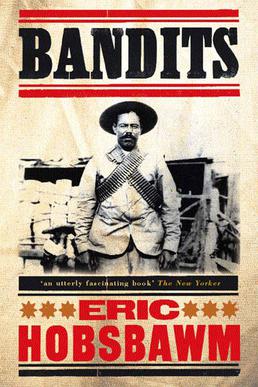
Bandits is a book by Eric Hobsbawm, first published in 1969 by Weidenfeld & Nicolson and re-issued in revised and expanded form in 1981 by Pantheon Books. It focuses on the concept of bandits within the mythology, folklore, and literature of Europe, specifically its relation to classical Marxist concepts of class struggle.
Maria Cammarata, was a prominent female leader of the Fascio dei lavoratori in Piana dei Greci, part of the Fasci Siciliani movement. The role of women in the Fasci Siciliani was substantial, but is regularly overlooked in historical accounts.
Primitive Rebels is a 1959 book by Eric Hobsbawm on pre-modern European social movements and social banditry.













